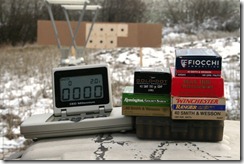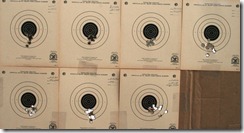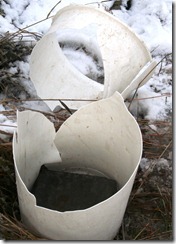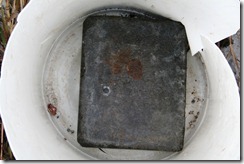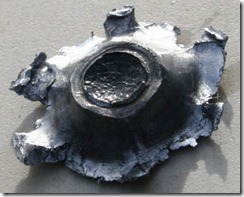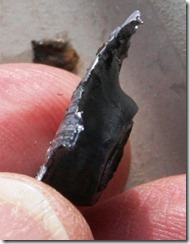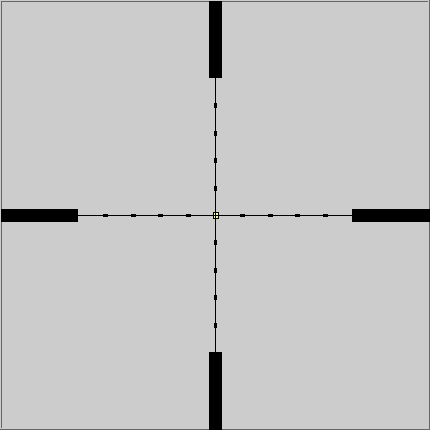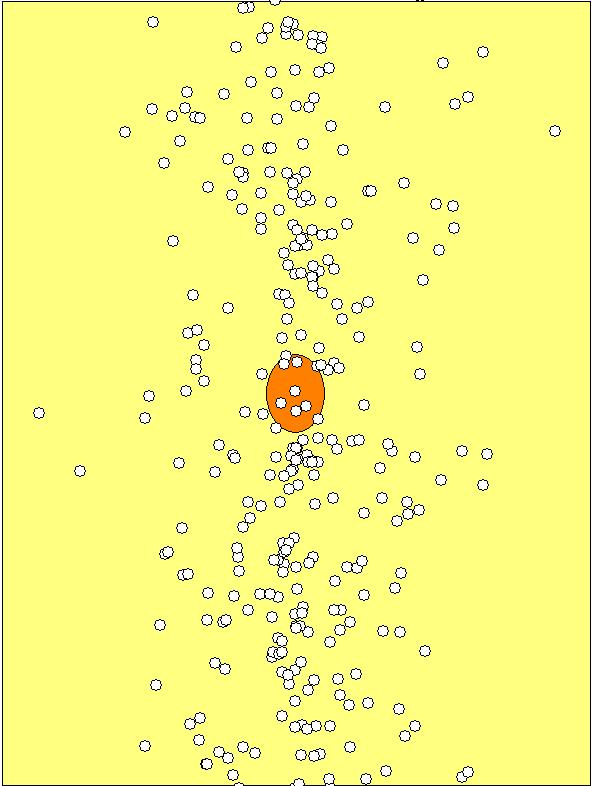That’s right; it was varmint control (hunting) season, also known in my house as step-one-food-processing season. So this is a month late (and I’m sure you all were chomping at the bit for it).
It was windy on the first day of muzzleloader season and the deer tend not to roam or forage as much in high wind, so I saw nothing, but I did get a nice “tree ride”. I wrote a little song while swaying this way and that in my tree stand;
Rock-a-by hunter
In the tree top
When the wind blows
The tree stand will rock
When the bow breaks
The tree stand will fall
And down will come hunter
Rifle and all
But later I realized that thousands of tree-climbing hunters must surely have thought of those exact words over the years, and so I can’t claim patent rights to the song. Anyway; I’m not sure you can call it “hunting” when all you’re doing is sitting there waiting to snipe a deer. “Waylaying” maybe, or “Ambushing”.
“I’m going ambushing, Honey. I’ll be back after dark.”
“OK. Good luck, Deer.”
“Wait. What? No– it’s good luck me, bad luck, deer.”
Thanksgiving evening I saw a nice buck come in from the wheat fields (our deer feed off of the farmers’ efforts most of the year in these parts). Now I never thought I was capable of doing this – you only take a shot if you’re going to make the shot, right? Therefore you don’t miss. That’s been my understanding and my experience up until now. In practice I’ve hit a target the size of the kill zone virtually 100% of the time, and in hunting previous years I’ve always put the ball close enough to where it belongs. So much for that as an axiom. I attribute it to a combination of a hair trigger on this percussion lock and cold fingers, but mostly to a timing error of the brain at that moment when timing is everything. Line up the sights under the target so you can keep the target in view the whole time, raise the front sight up to the A zone, fire. 1,2,3. Steps two and three ended up reversed somehow, such that once I got onto the A zone the ball had already escaped my control. The shot went right under the brisket, he jumped a little at the flash, the huge smoke cloud and the horrific blast, and went sauntering off unperturbed, flipping his tail and sniffing the ground. Moseying even, as if to show me how little he cared that I’d just shot at him with a fifty caliber rifle. Bloody show-off.
If that weren’t enough, I did it again with a nice doe two nights later, so a range session was in order the next morning. 100% “A” hits from standing unsupported. Two holes touching at 50 some yards, and a third right where I knew it went without using the binoculars—I’d pulled slightly low, but still a good shot. What the hell? I adjusted the lock for a slightly heavier pull, gritted my teeth, and kept climbing the tree.
The Tree is on a very steep slope between the farm fields and the Palouse River, and it’s a slog through brambles and fallen branches to get up there. Very good exercise that, and I feel much better now thank you, but one piece of advice; fighting through brush and thorns with very long hair is a problem.
More advice as if you’d asked for it; Doe urine is attractive to deer of both sexes. We humans tend to think of a urine smell as something to be avoided, but deer find it fascinating and it makes them relax– “Someone’s been peeing around here. Cool! I think I’ll stick around.” I once had two does trot in, calling to the non-existent doe that they’d smelled from downwind. They then stopped to hang around for a while and chew some cud. Urine is good stuff. I won’t tell you how to acquire doe urine. If you’re not interested it doesn’t matter, and if you’re interested enough you’ll figure out on your own.
Fifth day of season, fourth day out. The weather is too good this evening – no wind. No tree ride, but the chance of a close encounter is very good. Right on schedule, the huge covey of quail came chirping and fluttering in to roost just below my stand after sunset. As if on cue, a doe comes in through the brush with another full-sized doe and a smaller one following. Good enough. I’ll take the lead doe. Not gonna touch Mr. Trigger until the time is right. Full cock, ready to fire, taking aim. A quail explodes just under my target doe, causing her to leap reflexively, then settle down to a walk again. She’s more alert now. Damn. Why can’t this be easy? No. It is easy if I do everything right (that’s good advice there – marble sculpture is easy too, and eye surgery, so long as you do everything just right, see).
Blam!
“And…There!” I thought to myself. “Good let-off. That’s a hit.” No wind, so the smoke cloud lingers and I don’t see what happened with the deer. She’s just gone. But then I see all three deer just standing there off to my left, with stupid looks on their faces. These must be Republican deer– no ability to understand the situation and react appropriately for their own benefit. OK then, one of ’em’s going to expire right there, ’cause she’s been shot good, but I can’t just sit in the tree and do nothing, hoping. I’ve taken to reloading after a shot no matter what, so the rifle was charged as I lowered it on a cord and then climbed down. Prime the nipple. The three deer are still standing above me, very close at the top of the slope, as if caught in your headlights (Republicans alright) so I walk toward them. They just walk off, slowly, so I follow at a distance, waiting. One of the two larger does is hit, but which one is that? A little farther along the ridge now, and they’re all in view, all standing still, looking.
Now here is an ethical question for all hunters to ponder. You have one tag and three easy targets. One of them is hit for sure but you don’t know which one at the moment because in the smoke and confusion they shuffled and relocated. Light and legal hours are expiring fast. Do you, a) simply wait for the hit deer to expire, which risks having it run away first when you know you can’t track it worth squat in the coming darkness and the thick foliage, b) shoot the nicest looking deer and possibly let the currently injured deer get away, or, c) …..
It’s like phase two in the underpants gnomes’ plan (“…..”) yet the the only good choice I can think of is the technically non existent one. I’m not trying to be funny about it either. I have the gun up, ready to fire; eeny meeny my-nee moe…which one is my target doe…
“Use the Force” is as good a bit of advice as anything. It doesn’t really help but it might make you feel better. Actually that didn’t come to mind at all at the time. “Why doesn’t she go down?” came to mind. Gun up. Good backstop. They’re all standing broadside, like statues, presenting themselves as perfect targets, waiting for something to which they might react (Republicans for sure and for certain). I need a sign. Then two of them bound off, high-tailed, and one stays locked in place, head lower than normal alert status, maybe darker at the mouth. That’s her. Good backstop. Good angle. This one’s going right through the bioler room.
Blam!
Good sight picture, good let-off. She is double whacked, and hard. Still there is no wind and the big smoke cloud lingers. Again, no deer visible when the smoke clears. Just plowed Earth. I’m beginning to think muzzleloaders are a pain in the neck. Hope for some crosswind if you’re going to do this.
It’s getting dark – about 4:20 PM. That shot has kilt that doe plenty dead here at the top of the ridge on plowed ground, but she’s simply gone. The ridge falls off right here though, with brush and trees below. I am not happy as I don’t know which direction to start looking. In the undulating hills of the Palouse loess farmlands, you don’t have to go far to be over the horizon, and this spot is a prime example of that. My head’s on a swivel as I’m trying to decide where to go from here. Worry. Doubt. It probably would have looked comical for a couple seconds— one of several examples of why smokeless gunpowder is superior to black, but I soon find the two other does lingering in the bushes down the slope. OK. Search in that direction.
Below them is my target doe, dead as a hammer, belly up against some bushes at the bottom of a steep clearing. Relief. All is well. That first shot had gone in behind the diaphragm, busted the gut, busted the liver, penetrated the diaphragm on the far side, nicked one lung and busted a rib. Certainly lethal. A liver shot will bleed you out for sure, but too slowly to stop a deer before it gets some distance. The second shot went in right behind the left shoulder, wrecked both lungs and exited through the right scapula, busting ribs on both sides. A classic hit. She couldn’t have taken more than a bound before dropping a few yards from where she stood and then sliding down the incline. In hindsight, the second shot probably was not strictly necessary, but I had no way of knowing for sure at the time. A standing deer is still a target, I figure. From the first shot to finding the kill couldn’t have been more than four or five minutes.
I call several times on the radio for Son to bring the pickup. No answer. No answer on the cell phone either, but almost no coverage. Crap. Coyotes are numerous in this area and I don’t want to leave the kill. Texting works OK with a poor signal, but everyone’s at jazz band rehearsal I bet. Nothing for it. I tag the deer, then half drag, half carry it down the slopes and through the brush and thorns (did I mention that very long hair really sucks in this environment?) and run home with my gear. It’s down and across the river on a bridge and then up to the house (I said this was good exercise and I meant it) then a drive back to the bottom of the slope, panting like an over-worked sled dog, windows open to the 30ish degree air so I can cool off, back the tailgate against the slope and slide the carcass into the truck.
Cleaning (gutting) a deer in the dark is even more unpleasant than doing it in daylight, and that Maglite you hold in your mouth all the time so you can have both hands free– Na ga dah when it’s covered in blood and gore (I know – head mount – sure – you know everything). Son was home by then so he got flashlight duty. Hours after the first shot I had the cleaned carcass hung tidy in the garage, I was cleaned up, showered, and had a plate of really nice fried venison liver (the best in the world, and if you don’t believe it I don’t care) with home-grown mashed potatoes and leftover turkey gravy. That and a pint of homebrewed pumpkin ale, still pretty flat having been bottled only three days before, but still wonderful especially after not having eaten for ~12 hours.
It’s been a disconcerting and humbling season (knocked me off my high horse) but I’m happy with the outcome. The deer have to cooperate as I’ve said before, and this season was a good example.
Here’s where I get criticism, I suppose, for making what was technically a gut shot (plus I could have mistaken the deer for that second shot and had two dead deer with one tag). I could have simply omitted those details, had a fairly clean “true” story and elicited some praise, however I know from talking with more than a few hunters in private over my 50 some odd years that it can and does get uglier than that, and I figure you should know how it is in addition to knowing how it is ideally. I stand by my choices and actions. So there. Last year’s buck went down in its tracks due to a CNS hit, in turn due to the angle of the shot, but I was simply aiming for, and hit, the heart/lung cavity. That the ball grazed the spine on the way out was an unplanned bonus. One dead deer hung in my garage, was planned and that’s what I got each time. Primitive weapons and iron sights in low light are considered primitive for good reasons. A modern high velocity rifle round, say in the 6 mm to 30 cal range will cause far more trauma and therefore kill faster than the 50 caliber smoke pole, all else being equal, but even then a classic A zone hit with a modern system will often result in the deer running 40 yards or more before expiring. Expectations regarding the effects of gunshots have been taken completely away from reality by Hollywood types, and I dare say by gun writers and advertisers too. Killing is not a clean or tidy business. I don’t know; maybe next year I’ll try my luck at modern season. I’ve avoided modern season so far because I don’t like the extra company in the field, and because I can take a doe if I like. Some hunters go for neck shots, which will put them down quick and don’t risk destroying a picnic roast. That’s another option I guess.
Like this:
Like Loading...

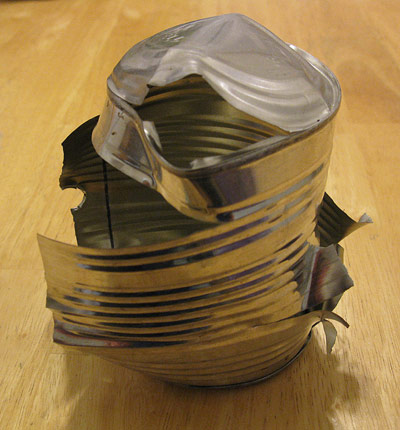
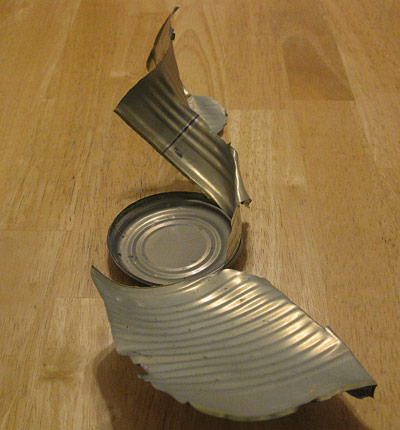
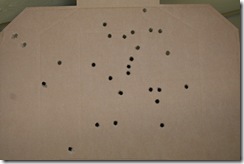
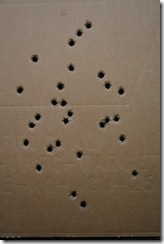


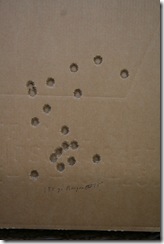
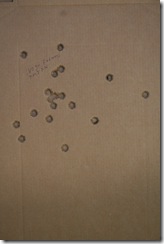
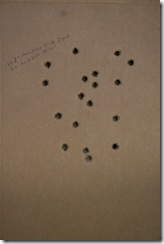
Web_2011_thumb.jpg)
Web_2011_thumb.jpg)

